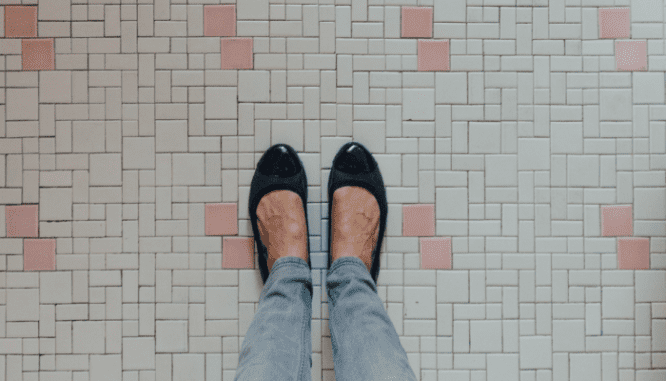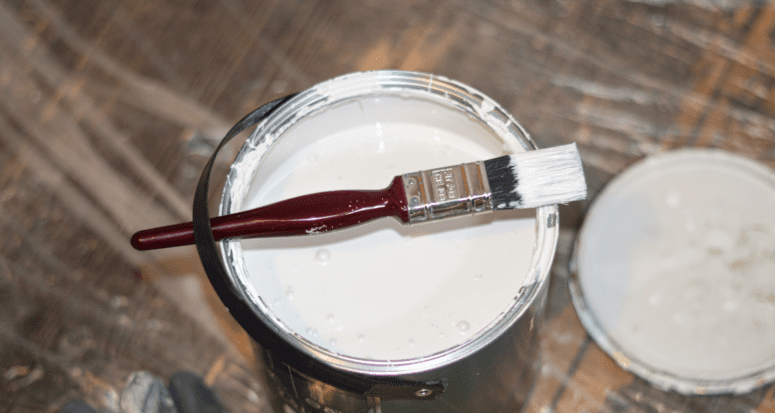Small Changes, Big Improvement: 8 Ways to Spruce Up Your Home for Under $1,000
- Published on
- 7 min read
-
 Gina Rodrigues Contributing AuthorClose
Gina Rodrigues Contributing AuthorClose Gina Rodrigues Contributing Author
Gina Rodrigues Contributing AuthorGina is a freelance writer and editor who specializes in real estate and personal finance. She brings more than ten years of experience as a licensed agent and property investor. When she isn’t writing, she can be found tending to the sheep and chickens at her suburban homestead outside of Seattle. Gina holds a B.A. in English from California State University.
You won’t transform your humble 1980s kitchen into a Joanna Gaines-inspired, Insta-worthy space with a $1,000 budget. Still, small home improvement projects can make a big impact on your home’s overall appeal.
We analyzed data from the National Association of Realtors® (NAR), Remodeling Magazine, and our Top Agent Insights Reports to curate a list of best hire-out home improvement projects for under $1,000.
For added insight on what home improvement trends appeal to homebuyers, we spoke with top Dallas-area real estate agent Swapnil Sharma, who knows what sells quickly in a home. Her properties sell fast — 44% faster than the average agent in her area.
Some projects on this list can add to your home’s value. Others add style and convenience. All give you extra joy out of your home — and appeal to homebuyers when it’s time to sell.

1. Add crown molding to the primary living areas
Plain rectangular rooms can be yawn-inducing. Crown molding adds architectural dimension to a space, just like a gallery frame enhances the artwork it encases. And while Sharma admits that molding isn’t a must-have for most buyers, they do appreciate this detail in main living spaces such as the formal dining room and living room.
In most rooms, white trim accents most color schemes and gives rooms a “finished” look. But in rooms with low ceilings, white trim can make the space feel smaller. For these rooms, paint the crown molding the same color as the wall instead of white.
Budget: $300 to $800 per room on average. ($4 to $15 per linear foot for both labor and materials)
Project duration: 1 to 2 days; an average living room can take 2 to 3 hours
Value add: While there’s no clear return on investment for crown molding, it gives your interior a “finished” look which may add marketability to your home at resale.
2. Replace the front door
First impressions are lasting impressions, and your home’s first impression happens at the front door. When choosing a new door, the style should accent the architecture of your home. A steel contemporary door would look out of place on a 100 year-old Victorian home, for example.
Also, keep your neighborhood in mind when choosing a new door. Azure green and burnt orange shades may suit areas with a quirky vibe, such as Austin, Texas, or Santa Cruz, California. In regions with more traditional homes, red or black may be more suitable.
If you’re looking to appeal to a wide range of buyers, Sharma suggests sticking with darker, traditional colors. Black, dark gray, and brown are classic choices. “It should flow with the color scheme,” she says.
As far as materials go, fiberglass is one budget-friendly and weather-resistant option. Another benefit? Some fiberglass styles are hard to distinguish from real wood doors. And the material holds up well against water and sun exposure.
Budget: $500 to $1,000+ depending on the type of door you choose
Project duration: 1 day
Value add: Not only will a snazzy new door make a great first impression to potential homebuyers, a NAR® survey of real estate agents also estimates that you’ll recoup 74% of the cost of a fiberglass door.
3. Modernize light switches and outlet covers
If you’re looking to modernize an older home, all it takes is a simple switch — quite literally. Swap out your beige toggle light switches to white rocker switches for a modern glow-up.
You can also take it a step further by integrating home automation. Upgrade to WiFi-enabled switches and outlets that you can control with a smartphone or home automation device, such as Amazon’s Alexa or Google’s Nest. With smart outlets, you can remotely turn lights on and off, and program a randomized lighting schedule as a security precaution when you travel.
Budget: $200 per switch
Project duration: 1 day
Value add: Similar to crown molding, crisp white light switches and outlets give your home a clean, finished look. Smart switches add to a home’s modern feel and appeal to buyers, particularly in markets with heavy tech influence. The technology can also improve energy efficiency. Dimmers, for example, can help save 40% of your electrical usage if you keep lights at 50% power.

4. Scrape off popcorn ceilings
The textured, cottage cheese look of popcorn ceilings has been a design faux pas since it fell out of fashion in the late 1980s. While the bumpy texture has its benefits as a sound dampener and camouflage for ceiling imperfections, its lumpy look remains disagreeable to many homeowners.
Sharma notes that most buyers she tours with will comment on popcorn ceilings in a home. “People don’t want popcorn ceilings these days,” she says.
Before you start any popcorn ceiling project, you should first hire a licensed pro to test for asbestos. The government banned asbestos in the late 1970s, but builders continued using ceiling materials containing asbestos into the 1980s. Due to the extra precautions necessary for removing popcorn ceilings containing asbestos, the cost for removal can triple that of non-asbestos ceilings.
Budget: $300 to $750 for 500 square feet of popcorn removal. Professional asbestos testing averages $500
Project duration: 3 to 4 days
Value add: In an average home of around 1,400 square feet, removing popcorn ceilings could add around $2,500 in value. For a larger estate home, the value add can shoot up to $25,000 to $35,000; however, the project cost for a sizable home would exceed our $1,000 budget.
5. Illuminate living space with recessed lighting
If you’re looking to brighten up a space that reads more bat cave than sunroom, recessed lighting is an elegant and modern solution. Extra lighting can illuminate a home to convey warmth and welcome, while gloomy spaces can feel bleak. And additional bulbs can be particularly beneficial for sun-deficient northern states or perpetually overcast regions such as the Pacific Northwest.
Sharma attests to the benefit of recessed lighting in a home, particularly if you’re getting ready to sell. She recently advised a client to install recessed lighting in their home’s main living space, which lacked light. Buyers don’t like dark spaces, Sharma explains. “[The recessed lights] helped tremendously. We sold the house for a much higher price, and fairly quickly.”
What type of lighting is best? Sharma recommends LED, which delivers plenty of lumens without much installation fuss. “LEDs are very bright and are nice and easy to install,” she says.
Budget: $800 to $1,000+ to install four canless LED lighting fixtures ($200 to $300 per fixture)
Project duration: 1 day
Value add: Recessed LED lighting creates an inviting atmosphere to attract homebuyers. And for your benefit, the energy-efficient bulbs use up to 90% less energy than incandescent lighting. You also don’t have to replace the bulbs as frequently as LED bulbs last 35 to 50 times longer than incandescent bulbs.
6. Replace the garage door
Sharma says that most homebuyers don’t scrutinize the garage door when they tour a home, so there’s no need to splurge on a new style if the one you have is functional. However, if your garage looks worse for the wear, you could up your home’s curb appeal and value by replacing a shabby-looking door.
Modern garage door trend leans toward darker hues that accent your home’s style and color scheme. Stately grays and browns have edged out bright whites, and black doors have become the new favorite neutral.
For added style, upgrade to carriage doors or a garage door with glass windows. Just know that you’ll need to bump up your budget for specialty designs. Decorative styles often cost two to three times more than an average garage door.
Budget: $800 to $1,500
Project duration: 1 day
Value add: You’ll spiff up your curb appeal while recouping 93.8% of the cost of a new garage door. A replacement can also boost your sales price by up to 4%, according to a 2018 survey of real estate agents by Clopay garage doors.

7. Re-tile flooring in the guest bathroom
If your bathroom features pastel tile floors from a bygone era or linoleum installed circa the invention of the microwave, it’s probably time to upgrade.
Thankfully, guest bathrooms are usually on the smaller side so revamping the space will likely take less material, time, and money than an owner’s ensuite. Despite its petite size, investing in a high-traffic area like the guest bathroom can add to your home’s marketability.
In a 2019 NAR® survey, 46% of Realtors® thought it was either somewhat important or very important to stage a home’s bathroom, suggesting that bathroom finishes could hold significance for homebuyers.
While you have a multitude of choices at Home Depot’s flooring aisle, two types stand out for durability and budget-friendliness: ceramic tile and luxury vinyl tile.
Pricier than luxury vinyl, ceramic tile is still relatively low cost compared to high-end finishes such as marble, which can stretch the budget at up to $47 per square foot.
An alternative to ceramic, luxury vinyl tile is enjoying its moment as an interior design darling. Current vinyl options can mimic the look of higher-end materials such as exotic hardwood, marble, or sandstone without straining your budget.
Budget: $750 to $1,000 for 50 square feet of ceramic tile ($15 to $20 per square foot); $350 for luxury vinyl tile ($7 per square foot, installed)
Project duration: 1 to 2 days
Value add: You won’t feel sheepish when you direct your guests to a bathroom that once had ancient, peeling linoleum. And while we can’t pin down a specific ROI for updated bathroom floors, a mid-range bathroom remodel (including updated ceramic tile flooring) recoups around 60% of its overall cost on average.
8. Freshen up interior paint
Sharma says that if you’re looking to make one change, freshening up your interior paint gives you the most bang for your buck. “It’s the easiest and cheapest way to enhance the value of a home,” she notes.
While some homeowners delight in canary yellow doors and cherry red accent walls, Sharma recommends toning it down if you’re getting ready to sell. “We always advise our sellers to have a neutral paint throughout,” she says.
Struggling to find a neutral color that doesn’t put the blah in bland? Current color trends include earthy tones such as the moody Urbane Bronze by Sherwin Williams and the pale warmth of Almond Wisp by Behr. Neutral grays also make the cut: Granite Dust by Valspar accents well with both warm and cool color palettes. You won’t have to second-guess whether it works with your existing color scheme.
And if you don’t mind rolling up your sleeves, painting is a great beginner project that can save you more than a couple of bucks. While professional painters may charge $200 to $800 to paint a 10-foot-by-12-foot room, you can DIY for $100 to $300.
Budget: $400 to $900 for a 12-foot-by-12-foot room ($3.30 per square foot, on average)
Project duration: 1 to 2 days
Value add: According to Consumer Reports, painting your interior walls can bump your home value by 1% to 3%.
Header Image Source: (henry perks / Unsplash)
